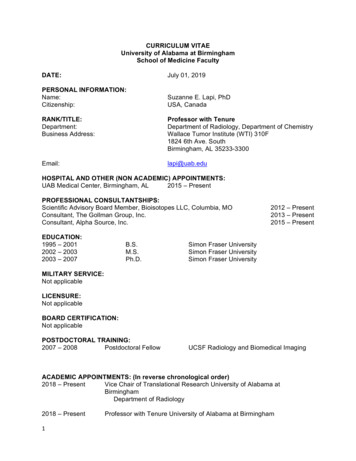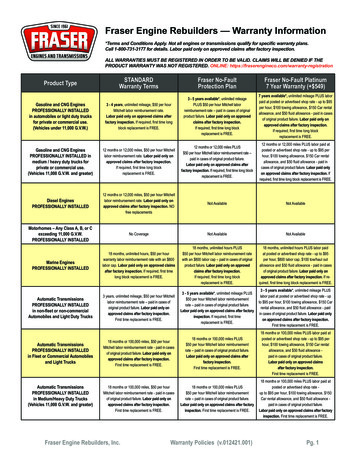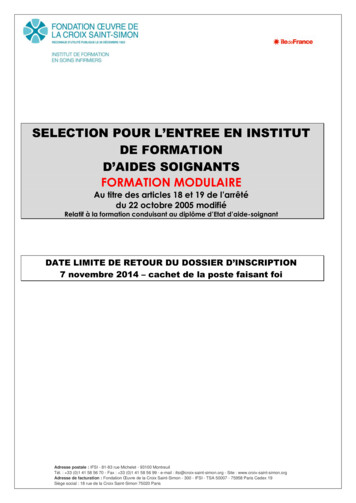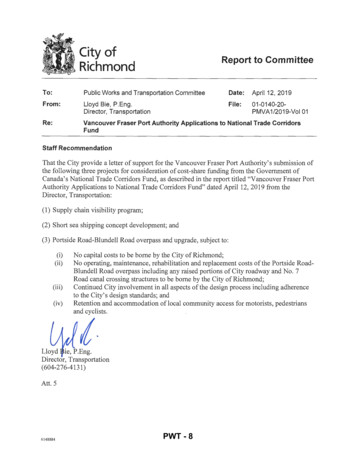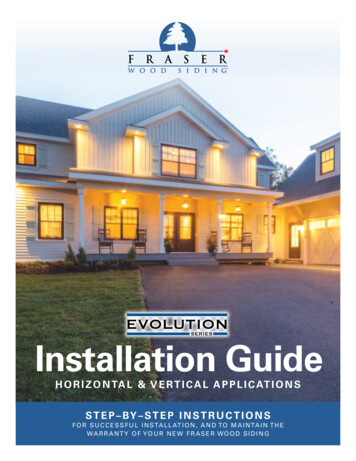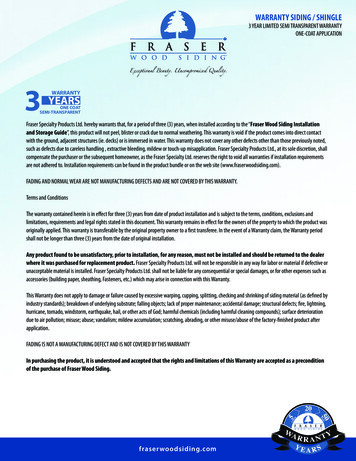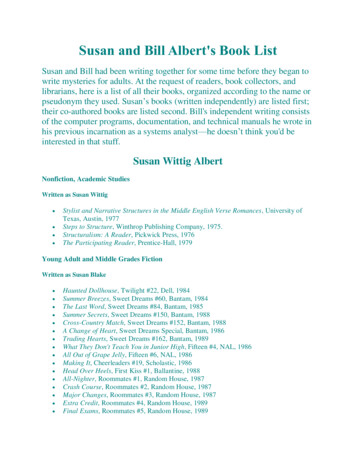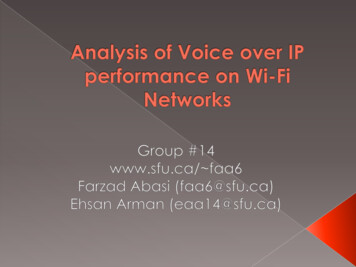
Transcription
Background Information Motivation Overview of Related Work Scenarios and Test Criteria Results Conclusion Future Work References Questions
Digitization of voice streams in a packet-switched networkTransmission of packets over IP-based packet networksQuality of VoIP needs to be compared to cellular networksDetermine if it has same advantagesParameters affecting a VoIP call include: Packet end-to-end delay Jitter Packet loss MOS (Mean Opinion Score)
Allow for wireless local area networks (WLAN)IEEE 802.11 protocols: Benefits: 802.11b: 11(Mbps), range up to 140m802.11g: 54(Mbps), range up to 140m802.11n: 160(Mbps), range up to 250mMobilitySpeedAvailabilityIssues: Packet lossPerformance proportional to distance from access pointRequires multiple access points
Wireless Access Point (WAP) Wireless Repeaters Wireless Routers Wireless Network Bridges Laptops Mobile phones
Delay characteristic and quality of VoIPchanges considerably Packets transmitted over a 802.11g network The new IEEE 802.11n technology canincrease the covered range
Mobiles use expensive restrictive plans Wi-Fi increasing in availabilityMobile phones with embedded Wi-FiFree Wi-Fi Hotspots vs. paid data plansLow cost VoIP servicesLong distance and local calling
VoIP used worldwideCommercial services widely available: Skype Vonage Voip.com and more Large user base
Three Scenarios: Baseline Ethernet Wi-Fi Wi-Fi two subnets Four Test Criteria: Jitter End-to-End delay Packet Loss MOS (Mean Opinion Score)
rceptible but notannoying3FairSlightly annoying2PoorAnnoying1BadVery annoyingMOS Values [7]
Setup typical Wi-Fi VoIP scenariosMeasured VoIP quality parametersWi-Fi scenario had: Same end-to end delay as baseline More jitter than baseline Similar packet loss as baseline Same MOS value as baseline
Mobile nodesTraffic congestionVoIP on Wi-Fi mesh networks802.11n protocol implementation
[1] S. Dixit, R. Prasad, “Wireless IP and building the mobile Internet” , PublishedBoston, MA : Artech House, c2003.[2] A. Raake, “Speech Quality of VoIP: Assessment and Prediction”, 1 ed. NewYork, NY: Wiley, 2006.[3] Y. Lin, W. Chen, C. Gan, “Effective VoIP Call Routing in WLAN and CellularIntegration”, IEEE Communication Letters, vol. 9, no. 10, October 2005[4] L. Cai Yang Xia, X. (Sherman) Shen, L. Cai , J. W. Mark, “VoIP over WLAN: Voicecapacity, admission control,QoS, and MAC” , International Journal ofCommunications , p. 491–508, 2006.[5] A. Mohd, O. Lee Loon, “Performance of Voice over IP (VoIP) over wirelessLAN (WLAN) for different Audio/Voice Codecs”. Journal of Technology, p.39-60,2007.[6] “Wi-Fi”, [online], Available; http://en.wikipedia.org/wiki/Wi-Fi. [Accessed: April1, 2010].[7] “Mean opinion score”, [online], Available;http://en.wikipedia.org/wiki/Mean opinion score. [Accessed: Mar 06, 2010].
?
Digitization of voice streams in a packet-switched network Transmission of packets over IP-based packet networks Quality of VoIP needs to be compared to cellular networks Determine if it has same advantages Parameters affecting a VoIP call include: Packet end-to-end delay Jitter Packet loss MOS (Mean Opinion Score) Allow for wireless local area networks (WLAN)
